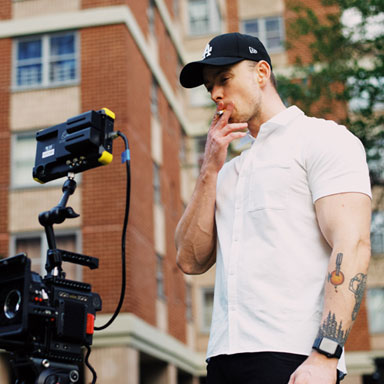ANNETTE
Previously “Annette” plunges into 140-odd minutes of surly tunes and fainting dramatic turns, chief Leos Carax assumes responsibility. In a protesting voiceover, he encourages his watchers to “hold your breath until the finish of the show.” This independent movie is by and large the kind of unthinkable solicitation that appears to be legit for this staggering melodic rhapsody: “Annette” doesn’t simply blow your mind; it keeps your breath prisoner until the credits roll.
Consolidating the stimulating organizations of Sparks with Carax’s is always puzzling inventiveness, “Annette” powers through its expressive stone drama pride with a propulsive Adam Driver at its middle. He sings through for all intents and purposes each scene as though the world relied upon it. Furthermore for the motivations behind this film, it does: Carax’s first executive exertion that he didn’t express, “Annette” turns on the unconventional equilibrium of the Sparks’ structures, Carax’s operatic style, and Driver’s insane presentation as a joke artist destined to come up short. Without a doubt, there’s likewise a wooden child that sings and an intermittent cutaway to a melancholic gorilla, yet they all exist to help the bigger reason in this independent movie.
As an unadulterated test ride communicated altogether through melody, “Annette” works in fits and starts with a similar dreamlike mix of tormenting excellence and dry, absurdist humor that Carax brought to “Heavenly Motors.” At times, it exchanges that film’s grandiose secret for a blunter account bend. Flashes has clearly been attempting to apply their winsome songwriting ability to film for quite a long time, at one point in any event, plotting with the late Jacques Tati, however their melodic bonafides don’t compare to a fitting content. In any case, wonder about these defects and the allure of “Annette” becomes animated: This independent movie is less captivating than the fantastic way it unfurls, the film frequently exists in struggle with itself, and the chaos is its most noteworthy resource as Carax and his melodic associates map out the direction of a man damaged by precisely the same condition.
As crazy looking standup entertainer Henry McHenry, Driver plays a man whose whole range of abilities is saturated with inciting a solid response. Andy Kaufman via GG Allin, Henry gets ready behind the stage in a green robe like a prize contender out of “Seething Bull,” and carries that equivalent confrontational soul to his presentation. He barrels across the stage in melody and rap as though nearly self-immolation (and at one point even wraps the amplifier rope around his neck) while the crowd chimes in with him and answers to all his impulses.
In spite of his crazy disposition, Henry some way or another keeps a genuinely typical sentiment with show vocalist Anne (Marion Cotillard in a muffled turn), basically until he develops to dislike her prosperity and his intoxicated tricks annihilate their relationship on the public stage in this independent movie. Amidst a rough separation, an exacting ensemble of Me-Too protests, and Henry’s overall propensity toward devastating choices, the couple brings forth the eponymous little girl, the previously mentioned manikin. Annette resembles a Chucky Doll with a portion of the DNA behind the tremendous Merde character who populates numerous Carax films, yet that may be all in Henry’s mind. Purpose on seeing everything as devices under his influence, the youngster addresses his frantic endeavor to remain applicable in a world very nearly surrendering him.
However, enough regarding plot: “Annette” fills in as well as it does in light of the fact that it’s shocking independent movie has been splashed in overwhelming songs and an artistic embroidered artwork that upholds it every step of the way. This is an independent movie that in a real sense starts with its chief and performers strolling into the close by their leads, then, at that point, saying farewell to them as they enter the following scene. The astonishing opening number, “So May We Start,” owes as a lot to the accordion break of “Blessed Motors” as it does anything in Sparks’ collection, however there’s a moment agreement that comes from this epic prologue to the bet to come. Edgar Wright’s new rambling narrative on Sparks clarifies how kin lyricists Ron and Russell Mael – who seem like a Greek melody on different occasions all through “Annette” – utilize energetic syntheses to investigate further enthusiastic vanities (Wright’s film fills in as essential survey for anybody hoping to get the full “Annette”). Like Sparks, Carax dominates at utilizing smooth, spellbinding surfaces to investigate the lovely forms of a dull, perplexing presence. They’re a decent match.
Consider, for example, the fainting heartfelt tune “We Love Each Other So Much,” a delicate earworm that could sound a cycle cliché all alone, yet turns into significantly more critical once Driver’s personality sings his stanzas amidst giving head. By setting the melody to an enthusiastic simulated intercourse, Carax extends the hidden abnormality of the material by putting it somewhere close to zinger and stomach punch, and that is the quintessence of the film in general. At the point when Henry’s crowd – who at first giggles in cadenced entries as Henry requests – ultimately rebels against him, his soul-filled conveyance of the line “What’s your fucking issue?” is both senseless and earnest. There’s a birth scene set to a smart tune and a paparazzi photograph meeting set to a staccato beat. In this independent movie each melody has a comparative senseless peculiar quality as well as a reasonable feeling of direction. It’s interesting until it’s not.
The incongruity, obviously, is that Henry’s not really that interesting by any means. Like Bo Burnham wrestling through his existential emergency in “Bo Burnham: Inside,” Henry has put such a huge amount into transforming his whole presence into a scene that he has no steady plan of action when the public quits watching. Be that as it may, his gimmicky routine might have been ill-fated from the beginning. “For what reason did you become a humorist?” the group asks him, and he answers that it’s “the best way to come clean without getting killed,” however from the start Henry appears to have a desire to die. “Annette” every now and again questions the general concept of chuckling as a protection component, directly down to the most frightening stimulate assault at any point put onscreen.
This independent movie real entertainment comes from Simon Helberg, in a diverting empty turn as Anne’s backup (“The Conductor”), whose best scene comes as he attempts to stuff in some explanatory discourse in the middle of creating an ensemble as the camera twirls around his face. “Annette” revels in minutes like these, where the story works in congress with Carax’s plan to give every scene its own unmistakable tone. Alongside cinematographer Caroline Champetier, the producer follows his characters with an aerobatic approach comparable to the undulating states of mind. Kylie Minogue’s profound exhibition in “Blessed Motors” may have been the run through, yet Carax has been alluding to melodic aspiration in his work since the time 1991’s outwardly awesome sentiment “Darlings on the Bridge,” and appears to be considerably more in a state of harmony with the idea of the story than the musicians who thought of it.
independent movie executive producer
Yet, “Annette” would struggle defending all that heighten without Driver’s dazzling genuineness to maintain some kind of control. In front of an audience in his fighters and lurching across the room with balletic accuracy, he’s equivalent amounts of Tom Cruise in “Magnolia” and Jesus Christ Superstar, the full weight of his detached forceful acting released. That dialed-up quality habitually eclipses Cotillard, and Anne’s aloof state for a significant part of the film addresses the pitiful idea of the job. Obviously, “Annette” is Henry’s story, and the independent movie dislikes her than he does. It should exist altogether inside his head.
Carax has coordinated only six motion pictures in almost 40 years, and “Annette” is the most recent evidence why: Each one turns on such an extraordinary explosion of stylish craving that it’s a marvel he has anything left in him by the end. “Annette” doesn’t squander a moment of its 140-odd minutes (not even the drapery call of the post-credits arrangement). Indeed, the carnivalesque spot of the last hour is a touch blundering, and it’s not alone. However as the film subsides into a peaceful, serious finale, life and execution breakdown into a solitary reshaped mass and “Annette” turns into a similitude for its own uneven ride. Floating near the precarious edge of breakdown, it’s a fragile dance among virtuoso and disaster, similar as Henry himself.




